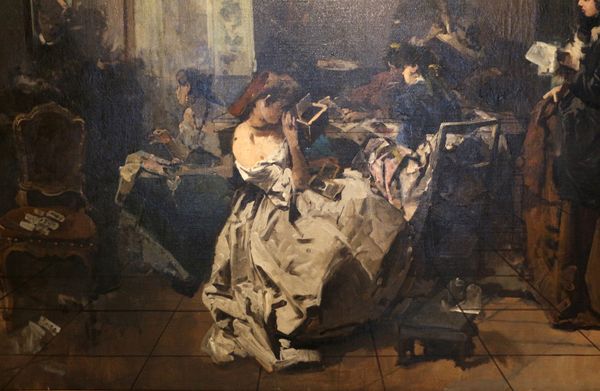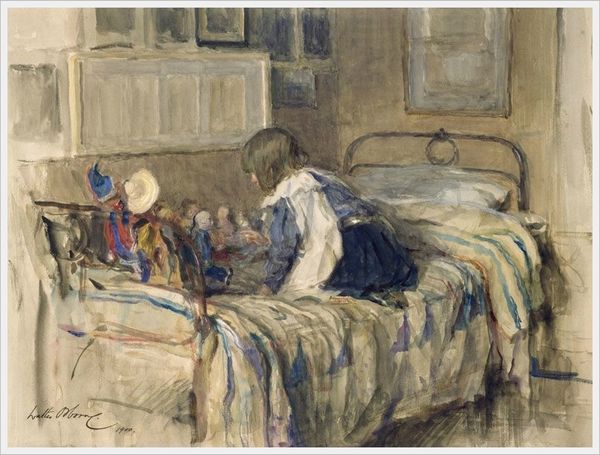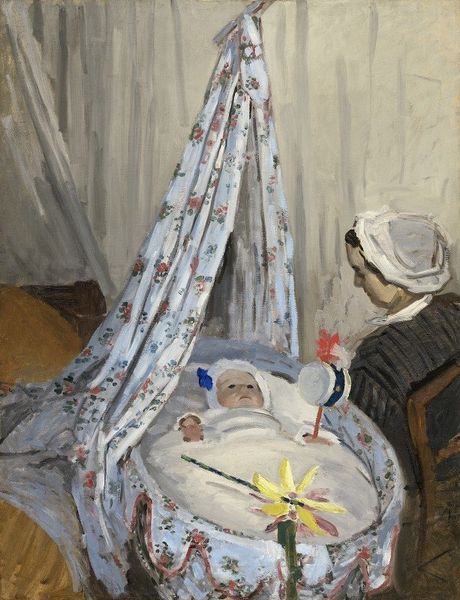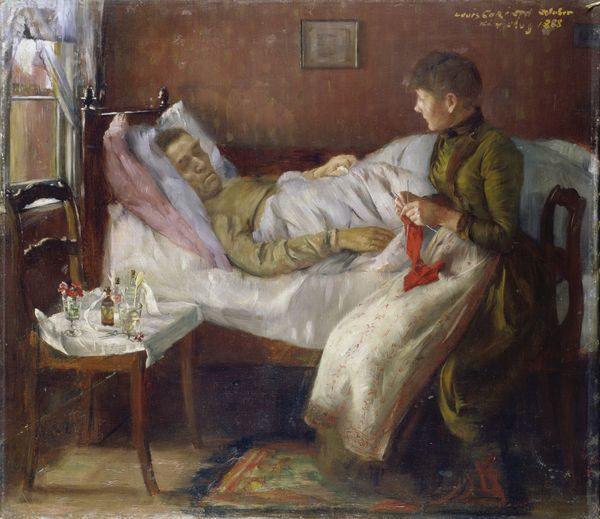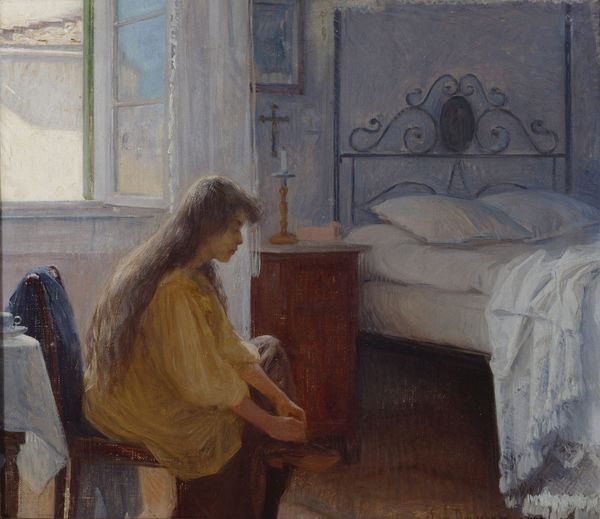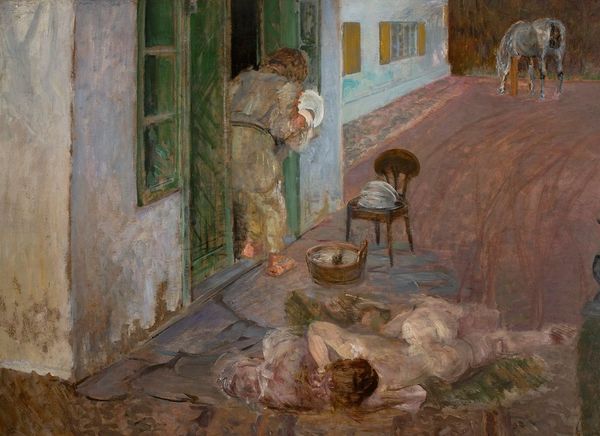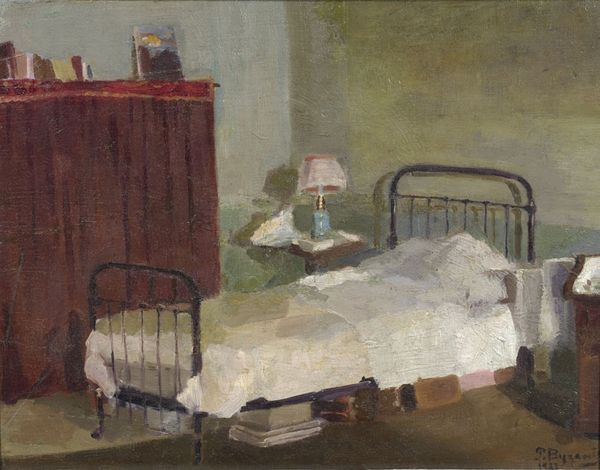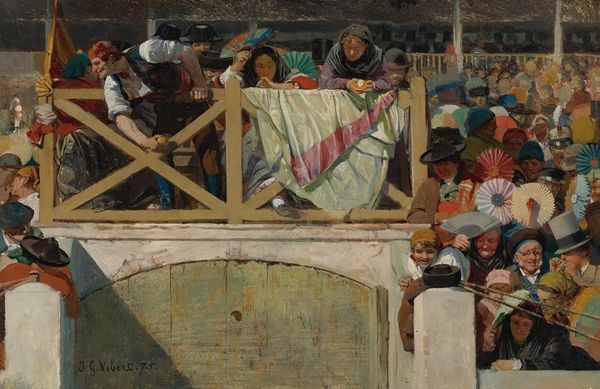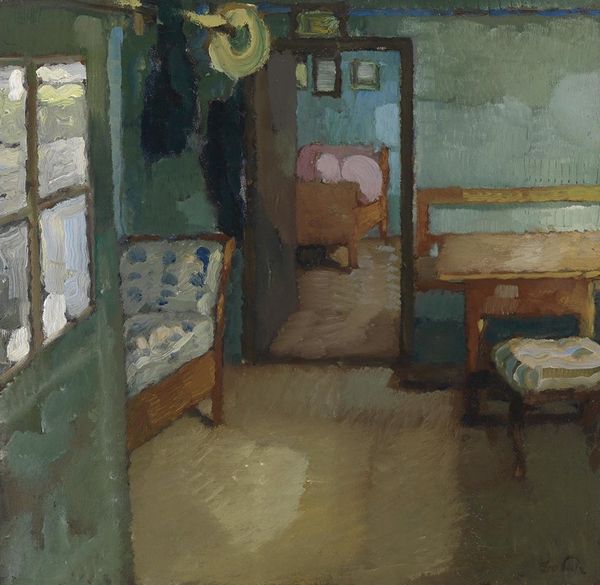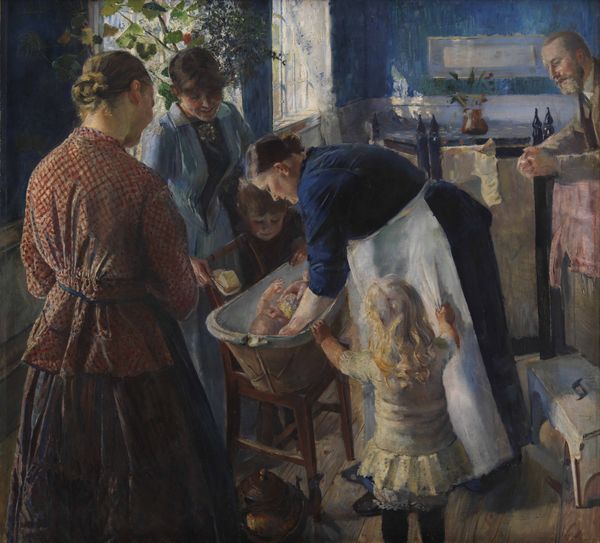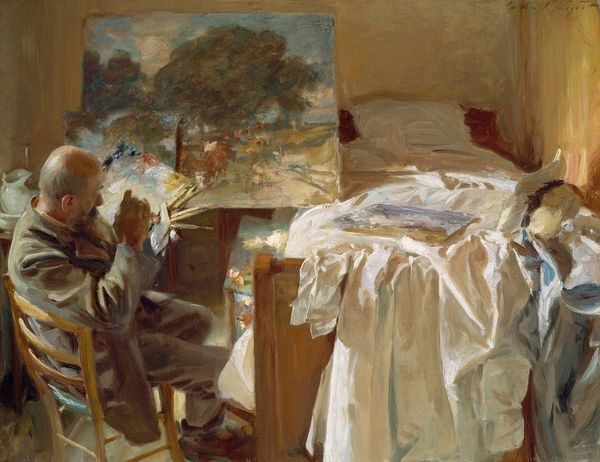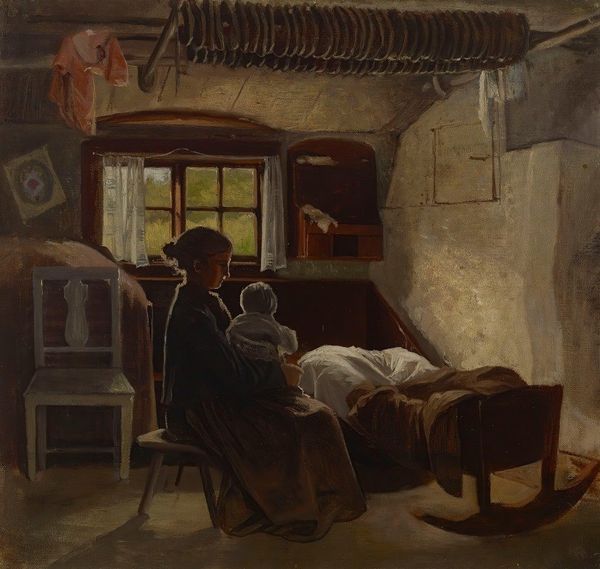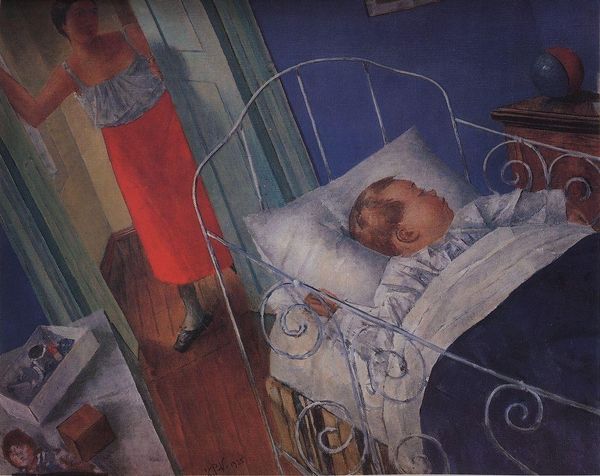
#
glasgow-school
Copyright: Public Domain: Artvee
Sir John Lavery captured Lady Henry’s Crêche in Woolwich in an undated oil on canvas. The painting presents a scene of institutional care for infants and young children, evoking questions about social welfare, class, and the role of women. Through an impressionistic style, Lavery depicts rows of cots with blue canopies, attended by nurses, alongside a playpen of children. The Woolwich crèche likely served working-class families, reflecting early 20th-century efforts to address poverty and support women in the workforce. But the painting also hints at the social stratification of the era, with charitable institutions stepping in where state support was lacking. Lavery’s loose brushwork softens the edges of what might be considered a political or social commentary. The painting raises questions: did Lavery seek to celebrate philanthropic initiatives or critique the conditions that made them necessary? Historians can consult records from charitable organizations, local archives, and period newspapers to better understand the context of Lady Henry’s Crêche, thereby gaining insights into the complex relationship between art, social reform, and institutional power.
Comments
No comments
Be the first to comment and join the conversation on the ultimate creative platform.
